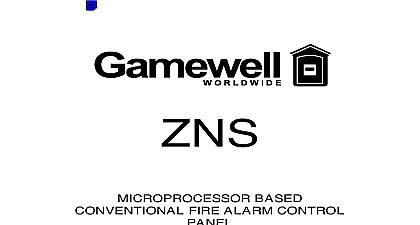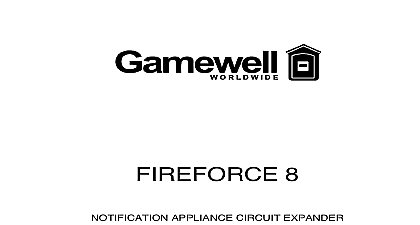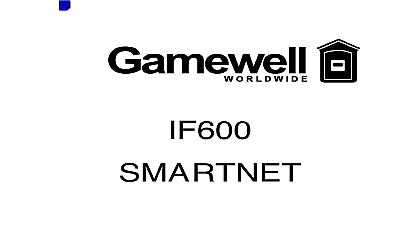Gamewell-FCI E3 Series Installation Operation Manual

File Preview
Click below to download for free
Click below to download for free
File Data
| Name | gamewell-fci-e3-series-installation-operation-manual-7451208963.pdf |
|---|---|
| Type | |
| Size | 14.97 MB |
| Downloads |
Text Preview
Alarm and Mass Notification Manual EQUIPMENT MAINTENANCE FACILITY TEMF BLISS EQUIPMENT MAINTENANCE FACILITIES EMF BLISS TEXAS FCI Fire Alarm Mass System Security Inc Northwestern Suite B Paso Texas 79925 915 778 6061 915 778 7046 Series Emergency System Manual 9000 0574 Rev 9000 0574 I 10 116 Limitations a fire alarm system may lower insurance rates is not a substitute for fire insurance automatic fire alarm system typically made up of detectors heat detectors manual pull stations warning devices and a fire alarm control panel with notification capability can provide early warning of developing fire Such a system however does not protection against property damage or loss of life from a fire Manufacturer recommends that smoke and or heat be located throughout a protected premise the recommendations of the current edition of the Fire Protection Association Standard 72 NFPA manufacturer cid 146 s recommendations State and local and the recommendations contained in the Guide Proper Use of System Smoke Detectors which are available at no charge to all installing dealers These can be found at http www systemsensor co A study by the Federal Emergency Agency an agency of the United States indicated that smoke detectors may not go off as many as 35 of all fires While fire alarm systems are to provide early warning against fire they do not warning or protection against fire A fire alarm may not provide timely or adequate warning or may not function for a variety of reasons Detectors may not sense fire where smoke cannot the detectors such as in chimneys in or behind on roofs or on the other side of closed doors Smoke also may not sense a fire on another level or floor a building A second floor detector for example may not a first floor or basement fire of combustion or cid 147 smoke cid 148 from a developing may not reach the sensing chambers of smoke because such as closed or partially closed doors or chimneys may inhibit particle or smoke flow particles may become cid 147 cold cid 148 stratify and not the ceiling or upper walls where detectors are particles may be blown away from detectors by outlets particles may be drawn into air returns before the detector amount of cid 147 smoke cid 148 present may be insufficient to smoke detectors Smoke detectors are designed to at various levels of smoke density If such density are not created by a developing fire at the location of the detectors will not go into alarm which have detectors even when working properly have limitations Detectors that have photoelectronic chambers tend to detect smoldering fires better visible smoke that have ionizing type sensing chambers tend detect fast flaming fires better than smoldering fires fires develop in different ways and are often in their growth neither type of detector is best and a given type of detector may not adequate warning of a fire detectors cannot be expected to provide adequate of fires caused by arson children playing with especially in bedrooms smoking in bed and explosions caused by escaping gas improper of flammable materials etc detectors do not sense particles of combustion and only when heat on their sensors increases at a rate or reaches a predetermined level heat detectors may be subject to reduced over time For this reason the rate of rise of each detector should be tested at least once per by a qualified fire protection specialist Heat detectors designed to protect property not life Smoke detectors must be installed in the room as the control panel and in rooms used by the for the connection of alarm transmission wiring signaling and or power If detectors are so located a developing fire may damage the alarm crippling its ability to report a fire warning devices such as bells may not alert if these devices are located on the other side of or partly open doors or are located on another floor a building Any warning device may fail to alert people a disability or those who have recently consumed alcohol or medication Please note that can under certain circumstances cause in people with conditions such as epilepsy have shown that certain people even when hear a fire alarm signal do not respond or the meaning of the signal It is the owner cid 146 s responsibility to conduct fire drills other training exercise to make people aware of alarm signals and instruct them on the proper to alarm signals rare instances the sounding of a warning device cause temporary or permanent hearing loss fire alarm system will not operate without any electrical If AC power fails the system will operate from batteries only for a specified time and only if the have been properly maintained and replaced used in the system may not be technically with the control panel It is essential to use only listed for service with your control panel lines needed to transmit alarm signals from a to a central monitoring station may be out of or temporarily disabled For added protection telephone line failure backup radio transmission are recommended most common cause of fire alarm malfunction is maintenance To keep the entire fire alarm in excellent working order ongoing maintenance is per the manufacturer cid 146 s recommendations and UL NFPA standards At a minimum the requirements of 72 shall be followed Environments with large of dust dirt or high air velocity require more maintenance A maintenance agreement should manufacturer cid 146 s Maintenance should be scheduled monthly Series Installation Operation Manual cid 151 P N 9000 0574 I 11 04 10 Precautions to the following will aid in problem free with long term reliability Several different sources of power can be to the fire alarm control panel Disconnect all of power before servicing Control unit and equipment may be damaged by removing inserting cards modules or interconnecting while the unit is energized Do not attempt to service or operate this unit until manuals are read understood System Re acceptance Test after Changes To ensure proper system operation product must be tested in accordance with NFPA 72 any programming operation or change in site software Reacceptance testing is required after change addition or deletion of system components after any modification repair or adjustment to system or wiring All components circuits system or software functions known to be affected a change must be 100 tested In addition to ensure other operations are not inadvertently affected at 10 of initiating devices that are not directly by the change up to a maximum of 50 devices also be tested and proper system operation system meets NFPA requirements for operation at C 32 120 cid 176 F and at a relative humidity 93 2 non condensing at 32 cid 176 C 2 cid 176 C 90 cid 176 F 3 cid 176 F the useful life of the system cid 146 s standby batteries the electronic components may be adversely by extreme temperature ranges and humidity it is recommended that this system and its be installed in an environment with a normal temperature of 15 27 cid 176 C 60 80 cid 176 F that wire sizes are adequate for all initiating and device loops Most devices cannot tolerate than a 10 I R drop from the specified device the instructions in the installation operating programming manuals These instructions must be to avoid damage to the control panel and equipment FACP operation and reliability upon proper instal


